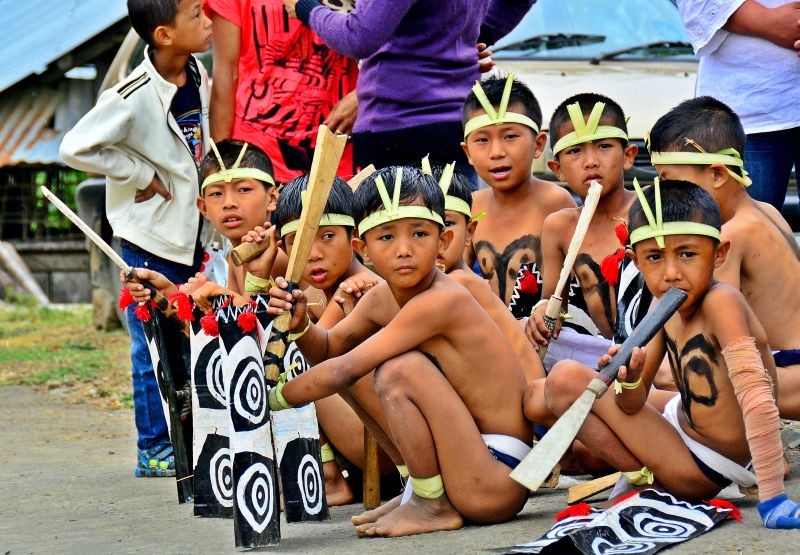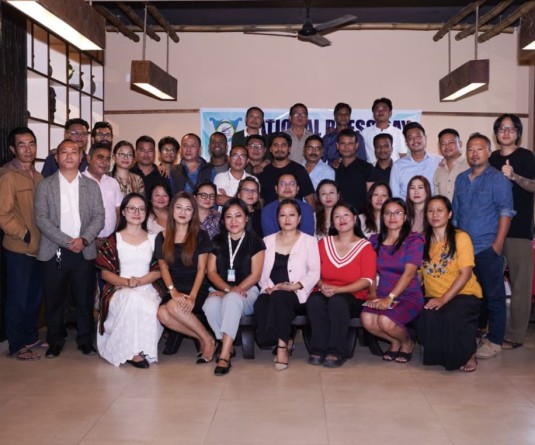Morung File Photo

Wati Aier
Introduction
I found the August 9, 2021, editorial column in The Morung Express to be fascinating and exciting for two reasons. Firstly, for the title itself: “Politics and Literature—The Agenda of Mythmaking,” and secondly, the frequenting of a subject dear to our consciousness: memories of belonging.
The columnist writes: “’Elites’ and writers from within a subjugated society have allowed themselves to be used as ‘tools’ to dehumanize their own fellow women, men, and children.” I cannot agree more with these words, and am reminded of our own Naga context, where our political leaders only seem to further isolate themselves from the people. Let us be brutally frank: we have yet to muster political ecology. That is to say, our political groups have yet to admit the limitations of the unfortunate belief that “all are wrong but us.”
The Naga situation is complex, and indeed one that is characterized by inertia. Multiple actors and stakeholders have not quite been able to identify the cause of this inertia (or perhaps they choose not to) and instead have merely focused on symptoms rather than address root causes. This has led to an endless cycle of short-term fixes, reactive tactics, and unresolved conflict between different groups. As Winston Churchill prophetically stated more than seven decades ago, multiple powers fighting amongst themselves “will be lost in political squabbles.”
Let us note that Naga people must change. For all those who want to bring “formal” political change, this is the crux of the matter: if Naga political groups aspire to serve a critical-analytical function in the immediate future of the Naga political fate, they must know and be able to point to the practice of Naga sovereignty in the here and now. They must know how to articulate the “form” of the imagined house, in the sense that they must know what building materials will be used and who will live in the house. Critically, they must operate with the basic assumption that criticism must not be met with defensiveness, but rather with humility and sincerity. In the Naga case, we will be judged by our ability to nurture self-awareness and steadiness amidst a world in disarray.
A Chance to Move Forward
For years, Naga people have lived in despair of moving forward. People are made to believe that either nothing will change, or that whatever happens is to be the accepted fate of the Naga people. For the sake of our own being, Nagas must move beyond this way of thinking and take upon a resourceful imagination for the practice of sovereignty. This realistic and resourceful imagination will help Nagas pursue our historical and political rights vis-à-vis the Government of India (GoI).
How do we pursue this imagination in order to move forward? First, we must be clear about our foundations. The genesis of Naga political history remains the only common memory of our belonging: one political history with one nation. Nagas who remain aware of this key aspect of our being must vigilantly safeguard it against the manufactured rationalization of other “bedrocks.”
Second, we must come clean about our shortcomings. Effective relations between the different Naga Political Groups (NPGs) continue to be unattainable due to unresolved accumulation of ills and mistrust among the groups. Let us understand that NPGs are functioning governments in their own rights. In this case, reconciliation has a practical role to play because it gives us a mind-set by which we can accept our differences and move beyond our harmful belief that anyone who is not with us is the “other.”
What evolves out of our agreement to accept our differences is an imagined social and political dividend coming from the craft of cooperation. As I have said before, we must understand that cooperation is nationalism begun; nationalism is cooperation at this best. Cooperation means to be dependent on one another. The primordial concept of “one-anotherness” has always been the trademark of the Naga ethos, enhanced by the diversity of our cultural colours. NPGs must talk of essential unity. They must talk, without being exclusive, of the Simon Commission, the Naga Declaration of Independence, and the Plebiscite of 1951 as collective milestones. Essential unity is to engage in the common history of the Nagas.
The limiting political worldview of undoing the other has proven to be useless. To continue nurturing such a view will only delay the Naga people from moving ahead. Without any disrespect to GoI, what should be worked out from within the Naga family is the duty of the Nagas themselves. Let us give the future a chance by candidly accepting our differences within essential unity. This is the task of NPGs and the people.
Practicing Sovereignty
In context, let us acknowledge this fact: GoI has officially signed the Framework Agreement (FA) with the NSCN/GPRN and the Agreed Positions (AP) with the Naga National Political Groups (NNPGs). Note that the “political obligation” from the side of GoI is an achievement of the Nagas. Regardless, since the signing of the FA and AP, a huge chasm has been created and filled with narratives by various ambitious and speculative “scholars” and “individuals” seeking to draw capital for themselves. Today, Nagas will be missing the mark if NPGs fail to muster the power of context. To put it bluntly, when GoI’s political obligation has been officially signed, the signatories of the FA and AP will have spent more time on non-essential, Machiavellians manoeuvres rather than constructing a shift towards cooperation by way of political imagination.
The test for NPGs is accordingly what F. Scott Fitzgerald describes as “the ability to hold two differing ideas and at the same time, and still [have] the ability to function.” In other words, the NPGs are presented with a creative tension that clearly articulates what the Naga people want and what the Naga people can do despite our differences. Every leader must determine to move towards the mind-set of imagining the Naga possibility. This is nothing but an orientation of one’s mind, spirit, heart, and strength to transcend the muddled ground.
In perspective, NPGs must also realistically understand GoI’s “understood” difficulties vis-à-vis Naga identity with its political markers. Let us keep on practicing what is ours. What is ours is understood. We must stop nullifying ourselves by asking GoI to annul this or that precisely because Nagas are asking for a right that GoI does not have. How can one offer what one does not possess? It can be stated this way: if Nagas are given what is already ours, then we invalidate ourselves. “Demands” and “what is” are different categories of thought.
In the practice of sovereignty, facts and policy need differentiation. The fact of Naga historical and political rights and policy are different but interrelated. The nature of Naga political right is complex and crosses several ethnic constituents and people groups, whose histories remain relatively unique. Simply, Nagas must get around to practicing our sovereignty. Naga sovereignty “from time immemorial” should have no contest in context—the way every village was sovereign either practicing democracy or run under chieftainship. From that primal setting to the Naga construction in the early twentieth century, this essence of sovereignty has always been part of the Naga ethos—and certainly can be the foundation on which the Naga nation is built. Without weakening the historical and political rights of the Nagas, it is imperative to face the facts and move forward with constructive nationalism. A piece of Kantian advice will do the Nagas good: nothing is as practical as a good theory. A good theory without a practice is idealism, and conversely, a practice without a theory is dangerously shaky.
The FA and AP are indeed significant achievements. Now, what can be implemented must be put in order and what cannot be implemented must be pursued bilaterally. In all, we must continue to respect each other, as well as respect ourselves. In regards to respecting each other, what is warranted is a reciprocal and equitable relationship between India and the Nagas. India and the Nagas are both tied to our own individual “obligations” as stamped in FA and AP. In regards to respecting ourselves, this has to do with the Naga family. What becomes essential now is the movement from self-centeredness to self-awareness and from attacking the “other” towards mutual respect. This movement forms the vital aspect of cooperation.
Our political model cannot be limited to a particular way of thinking. The paradox of the Naga factual concept must be immediately put into form. To be sure, forms will keep changing. Nagas must appropriate the realism of the here-and-now in the light of the not-yet. What can be worked out politically in a “block” and “blocks” should go ahead, and be considered with special political attention. The creative tension is to enact in the form of an overarching Naga political model, perhaps similar to the Sami Parliament.
To note, those who do not wish to be part of the envisaged political model cannot be coerced into it. The imagined parliament (or Hoho) is to live into the present with an emphasis on the power of constructive transformation. It is to unleash the freedom of women and men to participate in inventing the Naga sovereign world through engagement and sacrifice. The Nagas, as do other peoples, present varying perspectives on imagining our socio-cultural administration. One can think of many a Naga political model that draws from the past with pride, yet looks to the future, empowering our young generation in Asia and the rest of the world. One can imagine ways to prioritize the building of institutions and the sharing of our culture to the world, without terminating the present political dialogue with GoI. The sacredness of Naga hope lies in our ability to imagine that a future is possible in the present. This hope will point the Nagas to a concrete future, not of abstract concepts and rhetoric, but of practical, proactive nation building.
Conclusion
What I have presented is an abridged version of a detailed intentional imagination. I would urge women and men of the scholastic community to take on further discussion from a realistic perspective. Malcolm Gladwell’s “tipping point” is so near, only if resourceful Naga scholars are able to comprehend our conditions and act accordingly.
Looking at the present Naga narrative, a dangerous Naga script is the order of the day, ranging from deceit to the corruption of politics, from complacency to excuses. No matter how difficult it might be, this is the time for a resolute decision to be resolved and acted upon. It is my honest belief that our imagination will provide the potential for the historical and political rights of the Naga people to grow with dynamism. I also advocate that today’s circumstances are a catalyst for a common will. If we have an instinctual feeling of our place, that is, a genetic-instinctual feeling of the present state of affairs then this is the instinct for survival. Without a vision, people perish. We must turn the tide!
(*This abridged article is a personal imagination and does not represent any organization)





